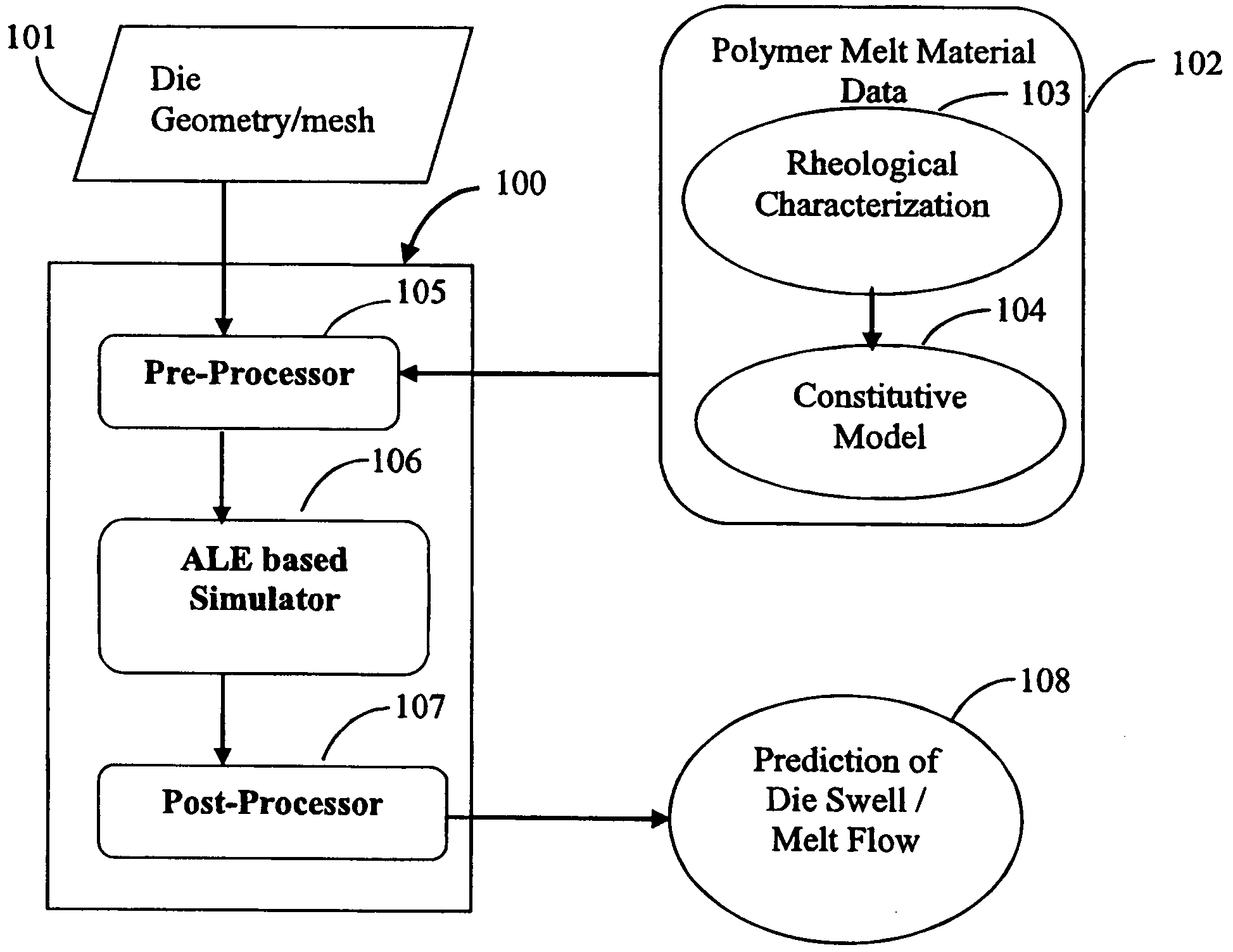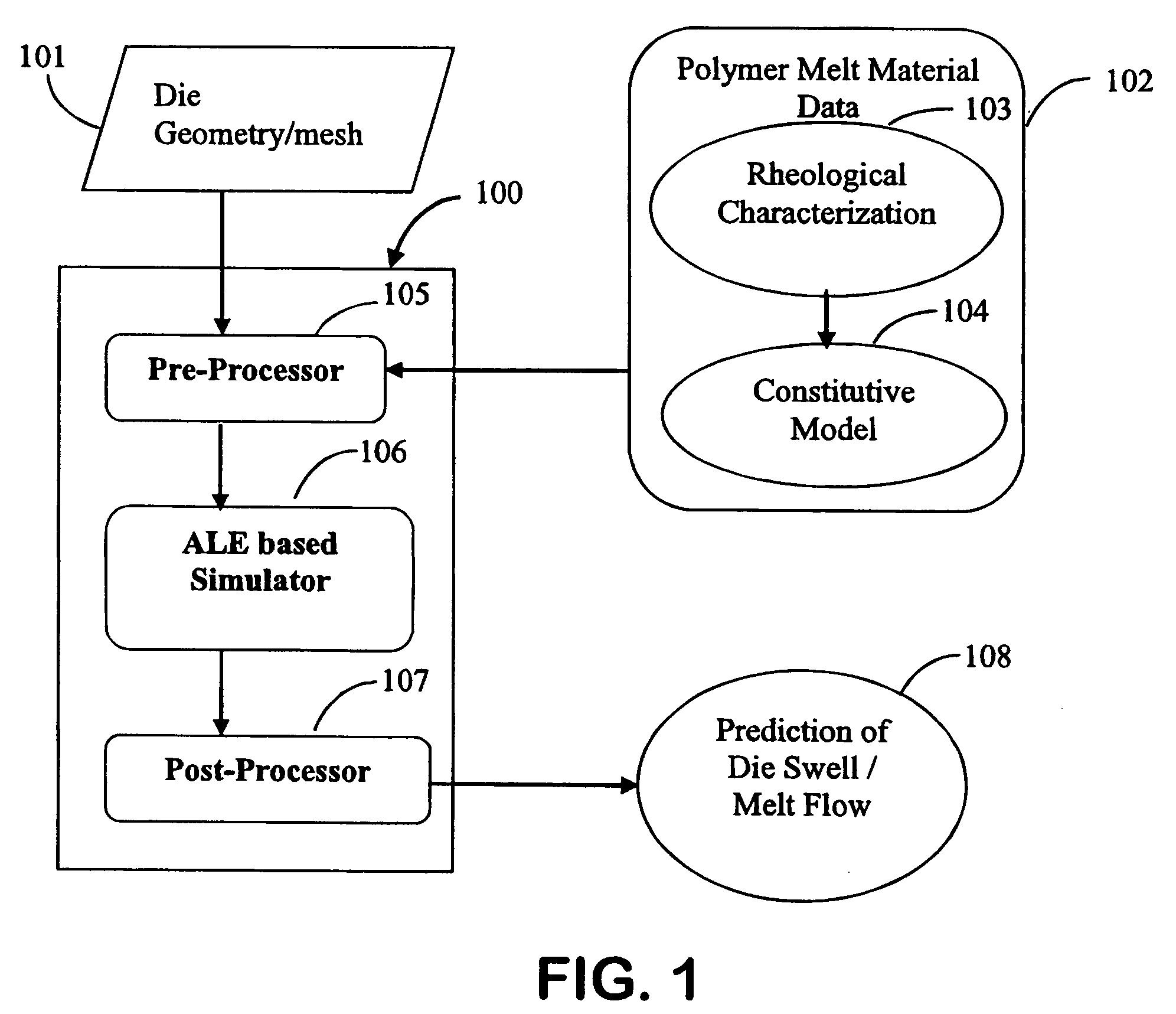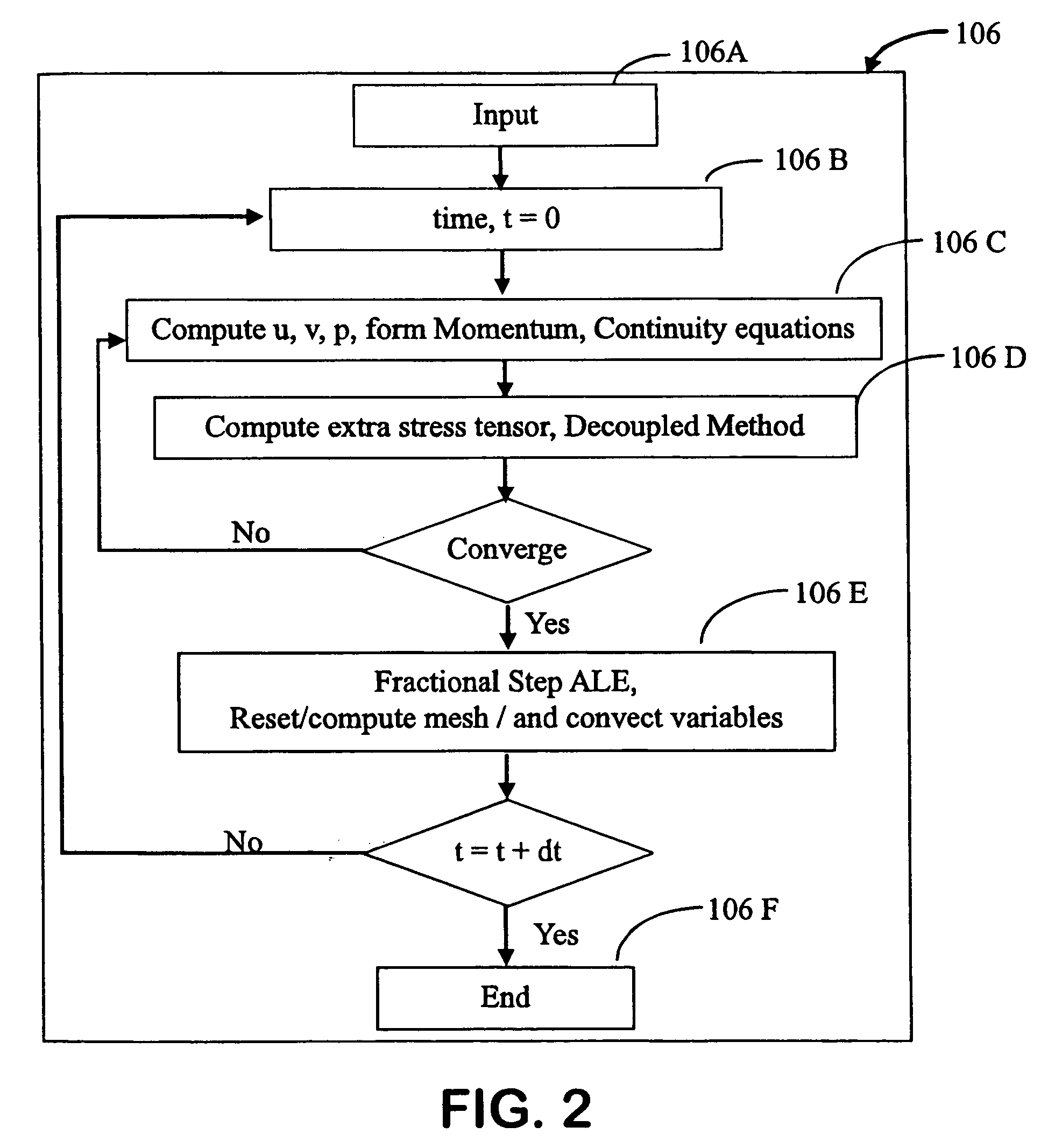Polymer melt extrusion which has potential use in die design
a technology of polymer melt and extrusion, which is applied in the field of polymer melt extrusion, can solve the problems of frequent remeshing, low extrusion rate, and inability to provide a reliable method for die swell calculation, etc., and achieves simple and reliable calculation, high extrusion rate, and accurate transient swell calculation
- Summary
- Abstract
- Description
- Claims
- Application Information
AI Technical Summary
Benefits of technology
Problems solved by technology
Method used
Image
Examples
example 1
Die Swell Analysis of LLDPE Melt for a Long Capillary Die
[0135]Die swell analysis using the present invention through a capillary die of length to diameter ratio, L / D=19.2 were compared with the experiments and predictions of Guillet et al. [as published in: Piau J. M., Agassant J. F. (Eds.) Rheology for Polymer Melt Processing, Elsevier, 1996, p. 285] and Be'raudo et al. While the constitutive model and the values of its parameters were identical to that used by Guillet et al. and Be'raudo et al., the simulation technique (ALE) was different than that used by these authors. Therefore the results provided a direct way of comparing performance of the two types of simulation techniques. The results are shown in FIG. 5, FIG. 6 and FIG. 7 for three different shear rates. ALE based calculations of die swell profile were in good agreement with the experiments at all shear rates.
example 2
Die Swell Analysis for a of LLDPE Melt Short Die with an Upstream Axisymmetric Contraction-Large Memory
[0136]The calculations based on the present invention were compared with the experiments of Guillet et al. and simulations of Be'raudo et al. for extrusion of LLDPE from a short capillary die having length to diameter ratio (L / D)=4.8 and D=0.65 mm. In this simulation the entire die geometry including the converging section of the die was considered. The simulation results shown in FIG. 8 were compared better with experiments than those of Be'raudo et al.
example 3
Die Swell of HDPE from a Planar Die
[0137]ALE based die swell results of simulations were compared with the simulations results and experiments of Ahmed et al. [as published in ‘The experimental observation and numerical prediction of planar entry flow and die swell for molten polyethylenes, J. Non-Newtonian Fluid Mech. 59 (1995) 129-153’] for Natene grade HDPE through a planar contraction. The die dimensions used in the simulations were the same as those reported by Ahmed et al. For the simulations using the present invention, the exponential PTT constitutive model was used, while Ahmed et al. used the KBKZ model with Wagner damping parameter, k=0.35. The PTT model parameter, ε was estimated to be 0.27. The swell ratio i.e., the thickness of the extrudate to the slit thickness at die exit was computed at a distance of 2 mm from the die exit. The results are shown in Table 1. The analysis of swell using the present invention had shown a better match with the experimental data.
TABLE 1...
PUM
| Property | Measurement | Unit |
|---|---|---|
| Fraction | aaaaa | aaaaa |
| Fraction | aaaaa | aaaaa |
| Fraction | aaaaa | aaaaa |
Abstract
Description
Claims
Application Information
 Login to View More
Login to View More - R&D
- Intellectual Property
- Life Sciences
- Materials
- Tech Scout
- Unparalleled Data Quality
- Higher Quality Content
- 60% Fewer Hallucinations
Browse by: Latest US Patents, China's latest patents, Technical Efficacy Thesaurus, Application Domain, Technology Topic, Popular Technical Reports.
© 2025 PatSnap. All rights reserved.Legal|Privacy policy|Modern Slavery Act Transparency Statement|Sitemap|About US| Contact US: help@patsnap.com



